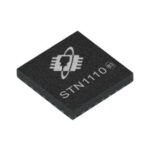Android OBD2 scanners have become indispensable tools for car enthusiasts and professional mechanics alike. These devices offer a convenient and cost-effective way to diagnose car problems, saving you time and money on potentially expensive repairs. This article delves into the world of Android OBD2 scanners, providing valuable insights to help you choose the best one for your needs.
An OBD2 scanner, paired with a smartphone or tablet, can quickly identify the source of a “check engine” light or other automotive issues. Without one, diagnosing car troubles often requires a trip to a mechanic, incurring diagnostic fees that can easily exceed the cost of an OBD2 scanner. By understanding how these scanners work and what features to look for, you can empower yourself to troubleshoot car problems effectively.
Understanding OBD2 Scanners and Their Functionality
OBD stands for On-Board Diagnostics. All gasoline cars sold since 2001 and diesel cars sold since 2004 are equipped with an OBD2 port, typically located under the dashboard on the driver’s side. This standardized port allows a scanner to communicate with the vehicle’s computer, retrieving diagnostic trouble codes (DTCs) that pinpoint malfunctions.
A basic OBD2 scanner can:
- Communicate with the vehicle: Establish a connection with the car’s computer system.
- Read fault codes: Retrieve DTCs that indicate specific problems.
- Clear fault codes: Erase DTCs after repairs are completed.
Choosing the Right Android OBD2 Scanner: Factors to Consider
The market offers a wide array of Android OBD2 scanners, ranging from basic code readers to advanced diagnostic tools. When choosing a scanner, consider the following:
- Compatibility: Ensure the scanner is compatible with your Android device and your vehicle’s make and model.
- Functionality: Determine the features you need. Basic scanners read and clear codes, while more advanced options offer live data streaming, sensor readings, and other functionalities.
- User Interface: Look for a scanner with an intuitive and easy-to-navigate app interface.
- Reliability and Durability: Choose a scanner built to last, with reliable performance and a durable construction.
- Price: OBD2 scanners vary in price, so set a budget and find a scanner that offers good value for your money.
Exploring Advanced Features of Android OBD2 Scanners
Beyond basic code reading and clearing, many Android OBD2 scanners offer advanced features:
- Live Data Streaming: Monitor real-time engine data, such as RPM, speed, and coolant temperature. This feature helps diagnose intermittent problems and monitor vehicle performance.
- Freeze Frame Data: Capture a snapshot of the engine’s operating conditions at the moment a fault code was triggered. This provides valuable context for diagnosing the issue.
- Smog Check Readiness: Determine if your vehicle is ready to pass an emissions test.
- ABS and SRS Diagnostics: Some scanners can access and diagnose issues within the Anti-lock Braking System (ABS) and Supplemental Restraint System (SRS).
Conclusion: Empowering Car Owners with Android OBD2 Scanners
Android OBD2 scanners are powerful tools that empower car owners to take control of their vehicle’s maintenance and repair. By understanding the functionality and features available, you can select the best scanner to meet your needs and budget. Investing in a reliable Android OBD2 scanner is a smart move for any car owner looking to save money and stay informed about their vehicle’s health.

